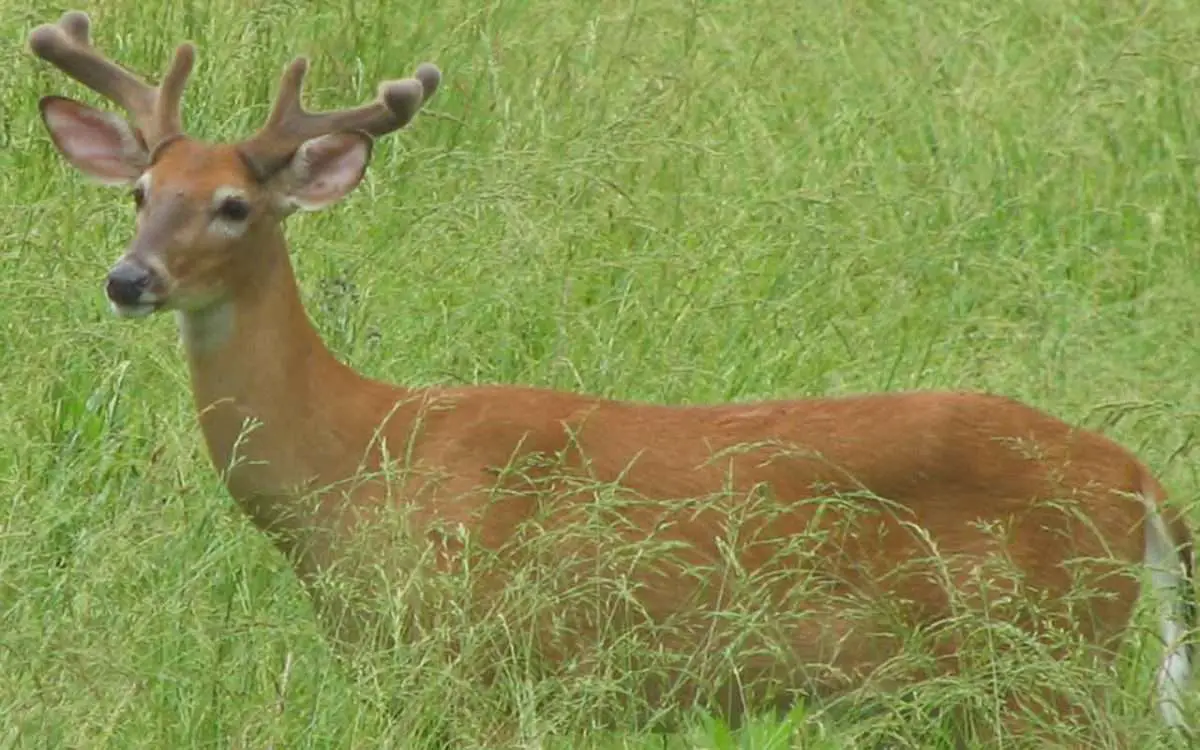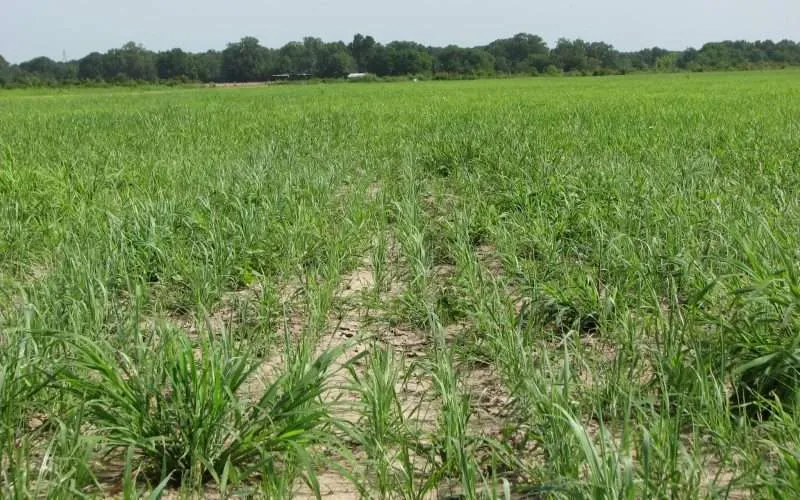Table of Contents Show
Switchgrass, Panicum Virgatum, is a leading biomass crop in the United States. It is also called tall panic grass, tall prairie grass, wild redtop, and thatch grass. It is a native warm-season grass. It was also previously used for hay and forage production. Several decades of experience with this crop suggest it will be productive and sustainable on rain-fed marginal land east of the 100th meridian.
Studies in the Great Plains, Midwest, South, and Southeast regions have indicated that this crop is productive, protective of the environment, and profitable for the farmer.
The first Switchgrass cultivation program began in Lincoln, Nebraska.
The first cultivar from this program was Nebraska 28, released jointly by the University of Nebraska and USDA in 1949.
Since then, crop management practices have been developed and refined. Also, researchers have evaluated genetic resources. Moreover, seed production has improved, and a vast body of knowledge has been made available to producers.
The general public became aware of this prairie grass on January 31, 2006, when then-President George Bush in his State of the Union Address, said,” We must also change how we power our automobiles. We will increase our research in better batteries for hybrid and electric cars and pollution-free cars that run on hydrogen. We’ll also fund additional research in cutting-edge methods of producing ethanol, not just from corn but from wood chips and stalks, or Switchgrass. Our goal is to make this new kind of ethanol practical and competitive within six years.”
It has gained significant attention as a model perennial grass for bioenergy production. Doing so can reduce our dependence on foreign oil and boost our rural economies. Moreover, switchgrass can reduce erosion, limit fossil fuel emissions, and enhance wildlife habitats.
Types of Switchgrass
There are two distinct ecotypes:
1. Upland
This type is more suitable for colder temperatures because they can tolerate the weather and, hence, can survive. The upland types are generally adapted to shallow soils and grow up to 5 feet tall.
2. Lowland
The lowland type is best suited for warmer temperatures and areas of longer growing seasons. The southern United States is where this type performs the best. This type can grow up to 12 feet tall and prefers deep soils.
Potential of Switchgrass as Biofuel
Usually, this perennial grass has a high potential as a bioenergy feedstock for ethanol production, combustion for direct heat and electricity generation, gasification, and pyrolysis. The U.S. Department of Energy (DOE) Bioenergy Feedstock Development Programme has selected this plant as the herbaceous model species for biomass energy.
Several characteristics make it a reasonably desirable biomass energy crop.
- Broad adaptive plant native to North America
- High yield consistent with other species in various environment
- Requires minimal agricultural inputs
- It is easy to establish from seeds
Manufacturing process
Switchgrass converts into ethanol primarily through two main methods:
Biochemical conversion
Sugars are directly converted to ethanol by the addition of enzymes and yeasts. The cellulosic feedstock is said to be more challenging to break down into fermentable sugars as compared to starch. The cellulosic biochemical conversion process requires further steps.
The two key steps are biomass pretreatment and cellulose hydrolysis.
During pretreatment, the hemicellulose part of the biomass is broken down into simple sugars and removed for fermentation. During hydrolysis, the cellulose part of the biomass breaks down into pure sugar.
The most prevalent sugar is xylose, released by the hemicellulose hydrolysis reaction. The manufacturing plants use Zymomonas mobilis or other genetically engineered bacterial species to ferment the xylose in this stage.
Yeast or bacteria feeding on sugars causes the fermentation reaction of glucose. Consumption of sugar produces carbon dioxide and ethanol. Moreover, the biomass conversion to ethanol process produces lignin and other byproducts.
Available lignin can produce the electricity required for the ethanol production process. Manufacturers can sell available extra energy produced by burning lignin to external sources.
Thermochemical conversion
Switchgrass can also be used to produce ethanol using thermochemical processes. In this conversion, chemicals and heat are used to break down the biomass into syngas (a mixture of hydrogen and carbon dioxide) and reassemble it into different products, such as ethanol.
Production Challenges
Producing this crop on a large-scale setup has some potential difficulties, but most of these difficulties are assumptions. It is worrisome that there may be more diseases and pests as the farming of this grass spreads across millions of hectares.
Likely, the long-term exposure of switchgrass to pathogens in North America and screening of the initial pathogen during cultivar development will limit the negative impact of native pests. However, research conducted on this matter is still sparse.
Production Costs
Recent economic studies on the five-year average in farms across Nebraska, South Dakota, and North Dakota have indicated that producers can grow switchgrass at a farm gate cost of $60/ton.
However, some experienced farmers had a five-year average price of $43/ton. One producer grew it for $38/ton. These costs are the cumulative total of all the expenses, including labor and land costs.
The research has indicated that growing this biomass crop for cellulosic ethanol is economically feasible in the central and northern Great Plains of the USA. However, you should expect that land and fuel prices do increase with time, so the overall input costs will also increase proportionately.
Environmental and Sustainability issues
As a sustainable source, biomass energy crops must be productive, protect the soil and water resources, and be profitable for the producers. Many studies show that Switchgrass will safeguard land, water, and air quality while providing sustainable production systems.
Also, it will foster carbon sequestration and wildlife habitats. All the while, it will help in increasing landscape, biological diversity, and farm revenue.
The standard for energy created from renewable carbon sources is different than for energy produced from fossil fuels. Renewable fuels must have lower greenhouse gas emissions and high positive energy values.
An energy model using estimated agricultural inputs and simulated yields predicted that Switchgrass could produce 700% more output than the input energy. Therefore, bioenergy made in this way is positive for the environment and efficient at producing energy.
A change in land use is necessary for introducing switchgrass-based bioenergy production systems. That is this prairie grass rather than row crops on marginal land. It has good yield potential as compared to other crops.
Growing it on marginal land will potentially enhance the soil ecosystem more rapidly and significantly than in more productive places.
Feasibility
There are several challenges when it comes to actual cultivation. A consistent and stable feedstock supply must be available to ethanol power plants throughout the year.
For the producers, these crops need to be profitable. They must fit into the existing farming practices and be easy to store and deliver to the plant. Agriculture extension services must provide farmers with information about the agronomics of producers and the best management methods for growing this particular variety of native prairie grass.
However, growing switchgrass can have multiple environmental benefits. The positive effects on the environment include crop stabilization and reduction in soil erosion, improved water quality, increased and improved wildlife habitats, and carbon sequestration to mitigate climate change.
This is the only form of native grass plant that we can consider a base cover for deer. It provides a natural habitat for wildlife such as white tailed deer.

According to the USDA, the Cave-in-Rock variety of this plant is suitable for range and pasture land, wind barriers, biofuel, and protection for lands subject to overflow and inundation.
The potential is high for achieving all these benefits. However, you must be familiar with farming techniques and implementation procedures to get maximum economic and environmental benefits. Farmers can use Switchgrass crops in addition to agricultural residues such as corn stover and wheat straw.
However, you must be familiar with farming techniques and implementation procedures to get maximum economic and environmental benefits.
Summer wheat straw and corn stover are available in the autumn. In contrast, farmers can harvest switchgrass in early spring while still dry. Typically the prairies are burned during this time. Thus, growers can reduce the need for feedstock storage by providing feedstock at different times during the year.
This native grass plant has many desirable characteristics and can produce viable seeds during the seedling season, especially during irrigation. Established switchgrass seed production fields can produce 500–1000 pounds of seed per acre with irrigation. Furthermore, the grain can be easily threshed, cleaned, and planted with commercial farming equipment. You can also buy switchgrass seeds from the market.
Conclusion
In the Great Plains and Midwest regions of the United States of America, Switchgrass is a reasonably excellent feedstock for biofuel production. It can fit well with either the biochemical or thermochemical platforms.
The research up until now supports it for bioenergy, stating that it is productive, protective of the environment, and profitable for the farmer.
As the USA is slowly shifting towards a renewable bio-economy, the unique characteristics of this prairie grass and its research history make it well suited to large-scale feedstock production in many regions of the USA.
FAQs
Q1. How and why is Switchgrass better than corn?
Ans: Switchgrass yields 540% more energy than energy needed to produce and convert it to ethanol, making the grass weed a far superior biofuel source than corn ethanol.
A study by the Agriculture Research Service of the US Department of Agriculture found that, on average, it gave biomass equivalent to 320 gallons of ethanol per acre, more than 60% of the average yield for an equivalent corn area after factoring in the use of fertilizers, pesticides, and fossil fuels. The study also indicated that the average greenhouse gas emissions from cellulosic ethanol derived from it were 94% lower than gasoline.
Q2. What is unique about switchgrass?
Ans: It is a perennial grass that works best in the warm season. It is also an all-weather grass with a mechanism that permits it to survive the colder temperatures in the winter season as a dormant plant. But for growth, it requires warmer temperatures. So, it is a resilient plant.
Q3. Does switchgrass spread?
Ans: The growing season of switchgrass starts in the late spring and it continues throughout summer provided that the moisture is available. It grows to an average height of 3 to 6 feet in small to large sodded clumps. They then spread gradually under the ground from numerous scaly creeping rhizomes.

